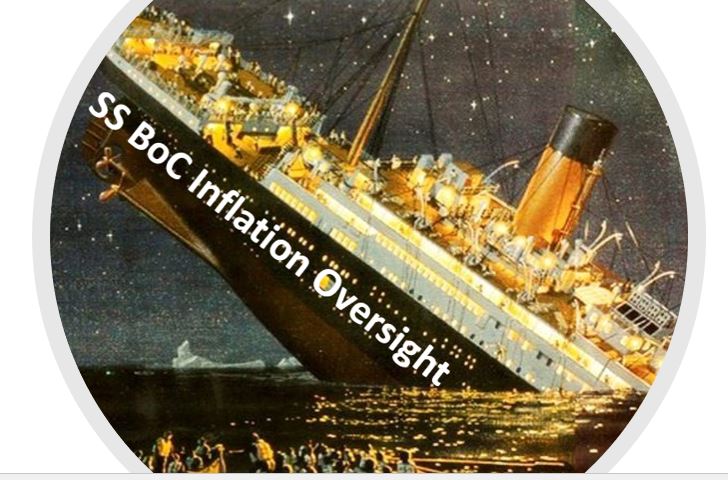
Picture: Wikimediacommons
By Michael O’Neill
”Hark the central bankers sing; Canadian rates are soon rising.”
The Bank of Canada disappointed more than a few analysts when they decided to leave interest rates unchanged at the January 26 meeting.
Governor Tiff Macklem didn’t understand the disappointment. He said, “Today we announced a significant shift in monetary policy. We judged it was appropriate to move forward in a deliberate series of steps,” then justified the inaction by blaming Omicron.
Quite simply, Canadian rates are going higher, starting March 2, and it’s not a guess. Mr Macklem said as much in the opening statement for the Monetary Policy Report press conference.
He said, “interest rates need to increase to control inflation. Canadians should expect a rising path for interest rates.”
So why not raise interest rates today?
Mr Macklem said it was to ensure that Canadians saw monetary policy as a source of confidence not uncertainty. Then he embarked a long, rambling “lord of the rings” meandering trek encompassing the BoC extraordinary monetary policy actions since the onset of the pandemic and the published guidance for exiting some programs.
He insisted today’s meeting was action. That’s because the BoC exited the final piece of their forward guidance, signaled a rising path of interest rates., and when rates have peaked, would consider shrinking their balance sheet.
Maybe, but it doesn’t do anything to address soaring inflation in Canada. In December, Canada CPI was 4.8% y/y, while the BoC‘s preferred measures, CPI-Trim (3.7%), CPI-median (3.0%) and CPI-common (2.1%), were all above target. Also, Canada’s employment has returned to pre-pandemic levels and even the BoC statement noted, “a broad set of measures are now indicating that economic slack is absorbed.
Did Mr Macklem forget about previous forward guidance that claimed BoC policy actions were data-dependent?
The BoC MPR defines the Bank’s mandate as promoting “the economic and financial well-being of Canadians” and that “the best way that monetary policy can achieve this goal is by maintaining a low and stable inflation environment.”
It added, “With strong employment growth, the labour market has tightened significantly. Job vacancies are elevated, hiring intentions are strong, and wage gains are picking up.
Perhaps Mr Macklem prefers to let the Fed lead the rate hike race.

Picture: Wikimediacommons/IFXA Ltd
The FOMC left interest rates on hold as most expected and set the stage for rates to lift-off in March.
The also proved that policymakers could whistle and blow simultaneously.
The statement said “The Committee decided to continue to reduce the monthly pace of its net asset purchases, bringing them to an end in early March. Beginning in February, the Committee will increase its holdings of Treasury securities by at least $20 billion per month and of agency mortgage‑backed securities by at least $10 billion per month.
How is that ending quantitative easing? Is the Fed where Enron accountants landed?
The Fed added another wrinkle to the mix. They released a statement about their planned balance sheet reduction. In a nutshell, they are planning to reduce the balance sheet at an indeterminate time, which when it happens is another form of tightening.
The impact of a series of rate hikes on US and Canadian USDCAD is far less clear. The BoC may be slow starting but by the end of the year the overnight rate will be between 1.25% and 1.5%. The Fed may lag that move which would give the Canadian dollar a yield advantage.
However, domestic influences are only part of the story. US stock markets, oil prices, and geopolitical concerns will continue to drive USDCAD direction.
West Texas Intermediate (WTI) is widely predicted to reach $100.00/barrel in the next few months, predicated on rebounding global growth, and reduced production capacity. That is good news for Canadian producers who are shipping crude to the US at close to a record pace. unless the oil price rise is due to heightened geopolitical tensions.
The stock market is another issue as Wall street price action drives global risk sentiment. The S&P 500 climbed 36% between Jan 6, 2020, and January 26, 2022, in what many describe as an “bubble economy” fueled by abnormally low interest rates. The ultra-low interest rate era is ending and that could spell doom for high-flying stocks which would underpin USDCAD which is highly correlated with the S&P 500.
BoC Governor Tiff Macklem doesn’t want Canadians to worry. He emphasized that “Canadians can be confident that the Bank of Canada will control inflation. We are committed to bringing inflation back to target.” Be confident but be hedged, if you need US dollars.





